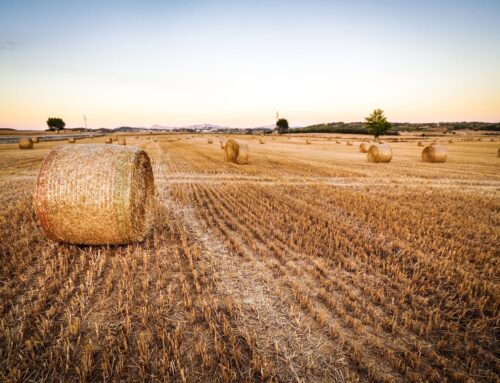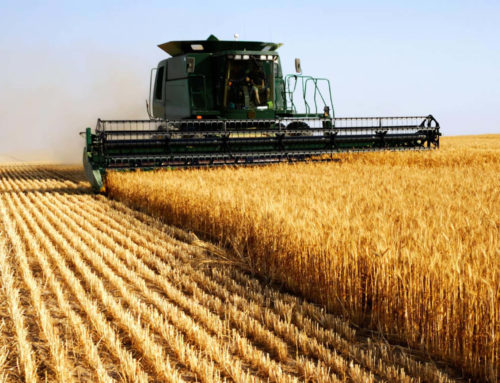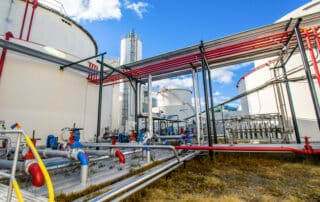In The News
A Democrat’s obsessive quest to change the way America is farmed and fed
Earl Blumenauer has been on a 26-year quest to pass a bill to reform farming to center people, animals and the environment
This article by Martin Scottenfirst appeared in The Guardian on July 26, 2023
Each year for the last 26 years – nearly his entire tenure in the US Congress – Earl Blumenauer has advocated for a law that would utterly transform US agriculture.
Nearly every time, though, his proposals have been shut down. Even so, he persists.
Blumenauer, a Democrat from Oregon, wants to see a version of US agriculture that centers people, animals and the environment, rather than the large-scale, energy-intensive commodity crop farms that currently receive billions of dollars in subsidies. In effect, he has a completely different vision for how 40% of the country’s land looks and works.
“Every year is an uphill battle. We’re up against entrenched, wealthy, strong interests,” said Blumenauer, known for his signature bowtie, circular glasses and bicycle enamel pin. He’s the spitting image of a progressive environmentalist and doesn’t shy from discussing some of agriculture’s most divisive issues.
But he remains optimistic and steadfast in his vision for the American food system. Now more than ever, he feels momentum and support surrounding the future of farming and food production. People care about where their food comes from and what kind of impact their food is having on the climate, he says.
Blumenauer’s newest plan, the Food and Farm Act, was introduced earlier this year, as an alternative to the farm bill – the package of food and agricultural policies passed every five years that is up for renewal this fall. His proposal would redirect billions of dollars away from subsidies for commodity farms towards programs that support small farmers, climate-friendly agriculture and increasing healthy food access.
The bill also prioritizes food waste management and animal welfare – areas that have been completely neglected by previous iterations of the farm bill.
“We simply pay too much to the wrong people, to grow the wrong foods the wrong way, in the wrong places,” Blumenauer said.
While unlikely to pass, Blumenauer’s bill, which has been introduced and referred to the agriculture committee, has won endorsements from prominent food writers such as Marion Nestle and Mark Bittman, as well as dozens of environmental, animal welfare and food justice organizations – representing the growing desire for change in US agriculture.
At the heart of Blumenauer’s bill is farm subsidy reform. In the most recent iteration of the farm bill, approximately $63bn was dedicated to subsidies. These mostly benefited the largest farms and agribusinesses, with 70% of subsidy payments going to just 10% of farms, most of which produce commodity crops like soy, corn and wheat, which are often used to make animal feed, processed foods and even fuel for cars.
This means that taxpayers are subsidizing processed food, but not the fruits and vegetables you buy in the grocery store – and that commodity farms have little incentive to switch to more sustainable modes of production or more nutritious foods that people will actually eat.
Most of us don’t even know that the public dollars initially designed to protect farmers and keep supply managed to feed a hungry nation in the Great Depression are now reinforcing wealthy agribusiness corporations to grow commodities that are not even meant for human consumption,” said Joshua Sewell, a policy analyst at the nonpartisan watchdog group Taxpayers for Common Sense.
Farmers that grow what are called “specialty crops”, which include fruits and vegetables, usually don’t qualify for subsidies. Most of the farms excluded from subsidy payments are those using sustainable growing methods that preserve soil and benefit the climate in the long term.
“It’s just maddening to me that the men and women who are working hard producing food, and particularly those that are doing so in a sustainable fashion, or who want to be involved with organics, they’re shortchanged,” Blumenauer said.
The Food and Farm Act also proposes limiting the total payment a farmer or agribusiness can receive to $125,000, and narrows eligibility, so that only farmers with annual incomes less than $400,000 would be eligible. (Previously farmers who made less than $900,000 were eligible, and could receive more than $1m in subsidies.)
In developing the bill, Blumenauer spent the last five years interviewing and engaging with agricultural producers in Oregon, a state that mostly produces milk, grass seed and wheat. He asked about their needs and wants, what’s working for them and what’s not. He always asks the same question: “What would a farm bill look like if it was just for you?”
He found that many farmers and ranchers want to see a redirection of resources from the largest producers to small-scale farmers.
“There is a pretty strong consensus that we’re not meeting the needs of farmers and ranchers and we’re not meeting the needs of the American public,” Blumenauer said.
Blumenauer’s bill also considers agriculture’s impact on the environment.
“Agriculture is one of the most environmentally destructive activities,” Blumenauer said. “There is an increasing awareness of how much carbon is produced and how much carbon we could save and sequester by making relatively modest changes in agricultural practices.”
Many of the 2018 farm bill’s conservation programs, including the Environmental Quality Incentives Program (EQIP), pay money to the largest agricultural operations, even though their practices are often harmful to the environment, explains Sophie Ackoff, farm bill campaign director at the Union of Concerned Scientists. Large producers are paid to make their operations more sustainable; however, much of that funding has been used for things like land clearing and road building, which provide little value to conservation.
In 2019, 10% of the program’s funding went to Concentrated Animal Feeding Operations (CAFOs), which have negative impacts on water quality, animal welfare and human health.
Factory farming and animal agriculture contribute nearly 15% of all greenhouse gas emissions worldwide and previous farm bills haven’t acknowledged the impact of factory farms on the climate, says Alexandra Bookis of Farm Sanctuary.
“As a system, it has a direct impact on the climate crisis that we haven’t addressed head on,” she said.
Blumenauer’s bill would instead end all payments to CAFOs and factory farms, as well as ensure more funding goes toward sustainable farming practices and operations that “demonstrably improve the quality of the environment”. It also mandates that any farm receiving a subsidy payment must comply with certain environmental standards.
Nutrition assistance and the Supplemental Nutrition Assistance Program (Snap) is a point of political contention every farm bill cycle, as the title accounts for nearly 80% of the farm bill’s budget. In May, Republicans proposed expanding work requirements for recipients of Snap, which would make it more difficult for people experiencing food insecurity to qualify for the program.
Blumenauer’s bill would not only expand Snap’s funding and eligibility, but it would also provide more funding for local food systems in urban and rural food deserts, as well as increase fresh fruit and vegetable consumption in schools.
“It’s a win for people on food assistance, but also farmers selling locally. So many of the farmers I’ve worked with get into it because they want to feed their communities, they don’t want to just sell really expensive food,” Ackoff said.
A significant portion of the bill is also dedicated to supporting new and beginning farmers – who often face barriers to entry, like lack of capital. It’s an area of untapped potential, and many young farmers are eager to grow food to feed their communities, they just need the resources to do so, Blumenauer says.
“Frankly, these are appeals that really touch American citizens,” Blumenauer said. “The support for family farms, for resiliency, access for younger people – these are themes that are extraordinarily popular, and very important.”

















Get Social